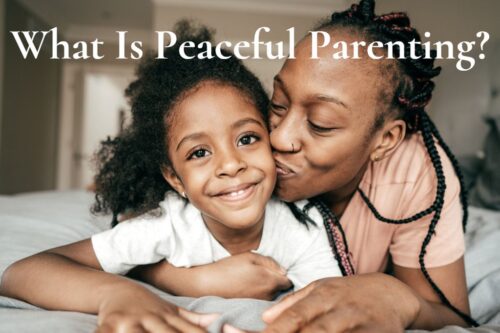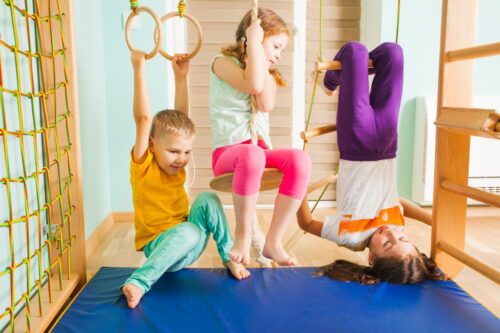3 Steps to Reduce Stress About Kids Starting School
Kids are starting school soon and that’s causing stress for parents for so many reasons! Some schools have announced that they will be going online for the upcoming school year. Others are trying a hybrid model, while some are choosing to bring students into the classroom. And all these options are reasons for anxiety and stress for parents who worry about their kids’ safety, health, education, socialization, and so forth. We are faced with incredible and unprecedented overwhelm.
I want to share 3 steps you can take to help you deal with the stress and the overwhelm. I hope to help you make the most of your time with your kids, whether they’ll be learning remotely or going to school. Our anxiety tends to make us controlling, short-tempered, impatient, and consequently, it can ruin our relationship with our children over school work and messy house, and other small things.
Table of Contents
These Are Stressful Times
Wherever you live in the world right now, I think you can agree that we are living in exceptional times. Lockdown, school closures, uncertainty, some schools will open in person, others online. Whatever decision school districts make, it will be tough on all parents and will cause a lot of stress about kids starting school.
We may be scared our kids will bring home the virus, as it’s happened in some countries and schools that opened in person. Or we may feel pressured and overwhelmed if our kids will have to learn online while we work from home, or if we decide to homeschool and we’ve never done this before. Lots of reasons for parents to feel stressed.
Any scenario is a brand-new situation that we’re not prepared for, so our brain is on high alert. Constantly!
So today I want to share with you the three steps that can help you reduce this stress and bring your brain to a calmer state by giving it some control.
And we can find control by making a choice.
How We Respond Is a Choice
While we can’t deny the stressors in our lives right now and the multitude of things we have no control over, there is one thing that is under our control. And that is how we respond to stress. We can’t control the stressors. But how we respond to the stressors in our lives is up to us.
We can make the choice to resist what is, the reality we are in, and to feel frustrated and unhappy because we don’t like it. Then we are in a continuous struggle to change what is, to go back to “normal”, whatever we had before.
Or we can accept what is. We can grieve the loss of certainty that we used to have, and we can feel sad about the situation that we are in. But then, we can try to find the strength to decide to move on.
Let’s see what we can do with the situation we are in. Not the situation we wish we were in. But the one we are currently in. Because we can’t change it.
So how can we make the choice to find peace?
The way we do this is in 3 steps:
- bring awareness,
- find acceptance,
- and take action.
Step 1: Awareness
First, we have to be aware of and acknowledge the way that we are feeling. If we are not aware of what we are feeling, then we are controlled by the feelings. We may also have knee-jerk reactions and we don’t even know why we’re acting or reacting the way we do.
The stress that we feel about kids starting school is really anxiety, nervousness, frustration, or sadness. It can be any or all of these feelings.
In these troubled times, when everything is upside down, when we don’t know what’s going to happen next, we don’t know how our children will be affected long-term by all that is going on, and we don’t know when everything will end, there’s a lot of uncertainty. And uncertainty causes anxiety.
Another feeling that we may have is sadness. Sadness for the fact that we can’t see our families and friends, our kids can’t participate in sports, my kids and I walk past the playground or the pool and they ask when we can go… All these things, and more, make us feel very sad. We lost many things that made us feel connected and secure.
So first, it’s important to allow those feelings. To not chase them away. You see, when we try to change and rebel against the current situation, it’s because we are actually trying to chase away those unpleasant feelings.
But acknowledging them and just noticing and being honest about them, “Yeah, I’m really sad and upset … and tired”, will help us to slow down and be more aware of what’s going on inside ourselves.
This step helps to release the emotions, so we are not as attached to them and controlled by them.
Step 2: Acceptance
Our brain likes things to be predictable. And what we had before, good or bad, was what we knew, what we were used to. So now that we don’t have that, our brain is in the red zone: “Alert! Alert! New situation, possible danger!” Living like this, on alert, for an extended period of time is exhausting.
We have to understand that our brain will want to bring us back to safety. So that’s why we have a tendency or even an urgency to bring back the old normal because it’s what’s familiar and makes our brain feel safe.
But here’s the thing. We can’t bring the old normal back. At least not for a while. We are in an entirely different movie right now. And if we keep fighting it, that’s not going to change anything. In fact, it’s making things worse for us.
Actually, when they teach water safety, the National Safety Council says that “If you get caught in a current, don’t try to fight it; stay calm and float with it, or swim parallel to the shore until you can swim free.”
And this is so relevant for any struggle or challenge that we are facing. Don’t fight it, stay calm and float with it. Until you can swim free. Those who fight it will likely drown.
Acceptance Is Not Approval
Now, I want to make a clarification here. Accepting the current situation does not mean we have to like it.
Let’s take as an example some school districts’ decision to have remote learning next school year. The decision has been made. This means we’ll be home with the kids all day, having to manage their online learning.
We don’t have to like this decision. We don’t have to agree with it. In fact, we may have entirely different opinions and ideas about how things could be handled. But the decision has been made. And now we have to live with it. And that can be very frustrating – to be forced to live with a decision that someone else made about what your life will have to look like for the next 10 months.
But it is what it is. And the wise thing would be to accept it. We can say, “I hate it. But I have to live with it.” And you know what? We will live with it. We can.
Opposing reality, fighting it, will cause nothing but stress and anxiety, because our expectations do not align with what is, with reality.
So, we can choose to live in our dreams, in our expectations, meaning in stress and anxiety. Or we can choose to live in reality.
Acceptance Means Survival
Try to imagine this for a moment: you are on a ship sailing on the ocean and at one point the ship lands and drops you off on an island. What do you do? Do you sit there and pout and stomp your foot and complain about this not being the island that you wanted? Or do you start going around looking for food and shelter? Doing the latter shows you’re accepting reality. And this is an important step in managing challenges and our survival.
So, I hope I was able to clarify how acceptance of reality works. Usually, people think accepting reality implies also appreciating it and liking it, and agreeing with what’s going on. And that’s not it. Acceptance is a far simpler and more basic step. It is what it is.
Step 3: Action
After we were able to acknowledge the feelings, “I feel a lot of stress about my kids starting school”, then we were able to accept reality, “This is what’s happening.” Now we can move into action with clarity: “What can I do to get through this in the best way that I can?”
And action is the step that can bring us joy. I’m not talking about constant, intense happiness or euphoria. But about finding moments of peace and joy, that help us to not have regrets when we look back on our lives a few years from now.
For the action step, I like to focus on two things: an inward action and an outward one.
Inward Action
The inward action has to do with having self-compassion. Dr. Kristin Neff, who is a pioneer in the field of self-compassion, has a few self-compassion exercises that you can try.
This inward action translates into giving ourselves a break. Truly accepting that our house doesn’t have to look spotless, we don’t have to do everything, and we don’t have to do it perfectly.
We only have to do whatever we can at the moment. And if that means that one day I can’t muster the energy to start the dishwasher, then so be it. I get another chance the next morning. I’ll only be pushing myself as far as I can safely go so that I can remain in touch with myself and present for myself and my family.
What we need is to slow down and offer ourselves the kind of mental support we would offer a dear friend or family member.
The way to get through this is to take it slowly, one day at a time.
Related: Are You a Good Enough Parent?
Outward Action
The outward action is focusing on gratitude. You may be wondering, how is this connected to our stress about our kids starting school soon?
There is a lot of research that’s been done on the positive effects of gratitude. It seems that when we practice gratitude, our overall well-being increases, we sleep better, we can cope better with stress and depression, and it helps strengthen our relationships.
So, how can we practice gratitude at a time when there seems to be so little to be thankful for?
This will look different for everyone. But I encourage you to think of small things at first. Even the fact that you have a screen and access to the internet so you can be reading this right now. I am grateful that I can have video calls with my family and friends daily.
This can be just taking a minute either at the start of your day or at the end, to find one thing that brings a full feeling of gratitude. And focus on it and how it feels in the body for a minute.
Another thing that I have been doing to help me find joy in being at home with my kids all this time is watching videos of them as babies and toddlers. This really softened my heart and I am able to see how little they still are and how many traits and expressions they’ve preserved from when they were very young. Seeing my kids in this soft, beautiful light has helped me to tolerate a little better the mess that they create in the house in a matter of seconds. (A side note, I generally get very triggered by mess.)
Final Thoughts
So the question is, even though we have a lot of stress about our kids starting school soon, how can we find little moments of joy, so we can still be present for our children and our relationship?
To recap, we can become aware of our feelings, accept reality, and take action to keep us going forward.
Bringing in a positive perspective requires intention and effort. It comes more easily to some than others. But if practiced, we can all get better at it. We have to override our brain’s tendency toward constant negativity. And we can do it.
Deep inside, we all have a peaceful place that we can tap into if we allow ourselves some time and quietude.
Let me know in the comments what little actions you’ve taken to help you get through this tough time.








Loved your post!
Thank you, Tanvi. I am happy you found it useful. 🙂